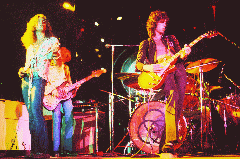- Parent Category: Reader's Corner
The Evolution Of Music Part-III Jazz
Jazz is a kind of music characterized by swung and blue notes, call and response vocals, polyrhythms and improvisation. Though originally a kind of dance music, jazz has been a major part of popular music, and has also become a major element of Western classical music. Jazz has roots in West African cultural and musical expression, and in African American music traditions including blues and ragtime, as well as European military band music. Early jazz was closely related to ragtime, with which it could be distinguished by the use of more intricate rhythmic improvisation. The earliest jazz bands adopted much of the vocabulary of the blues, including bent and blue notes and instrumental ‘growls’ and smears otherwise not used on European instruments. Jazz’s roots come from the city of New Orleans, Louisiana, populated by Cajuns and black Creoles, who combined the French-Canadian culture of the Cajuns with their own styles of music in the 19th century.
Add a comment Read more: The Evolution Of Music Part-III Jazz


 R&B, an abbreviation for rhythm and blues, is a style that arose in the 1930s and 1940s. Early R&B consisted of large rhythm units “smashing away behind screaming blues singers (who) had to shout to be heard above the clanging and strumming of the various electrified instruments and the churning rhythm sections”. R&B was not extensively recorded and promoted because record companies felt that it was not suited for most audiences, especially middle-class whites, because of the suggestive lyrics and driving rhythms.
R&B, an abbreviation for rhythm and blues, is a style that arose in the 1930s and 1940s. Early R&B consisted of large rhythm units “smashing away behind screaming blues singers (who) had to shout to be heard above the clanging and strumming of the various electrified instruments and the churning rhythm sections”. R&B was not extensively recorded and promoted because record companies felt that it was not suited for most audiences, especially middle-class whites, because of the suggestive lyrics and driving rhythms.
 Rock and roll developed out of country, blues, and R&B. Rock’s exact origins and early influences have been hotly debated, and are the subjects of much scholarship. Though squarely in the blues tradition, rock took elements from Afro-Caribbean and Latin musical techniques. Rock was an urban style, formed in the areas where diverse populations resulted in the mixtures of African American, Latin
Rock and roll developed out of country, blues, and R&B. Rock’s exact origins and early influences have been hotly debated, and are the subjects of much scholarship. Though squarely in the blues tradition, rock took elements from Afro-Caribbean and Latin musical techniques. Rock was an urban style, formed in the areas where diverse populations resulted in the mixtures of African American, Latin Categorising music and breaking it down into genres and sub – genres on a global scale is one hell of a daunting task. Keeping that in mind, we have focused on the music of the United States of America which has often been termed as a melting pot of diverse styles of music. This, one has to attribute to large scale immigration and slavery. This brought a lot of musical styles into direct contact with each other, resulting in a lot of fusion and hybridization of the pre existing styles. Elements of foreign music arrived in the United States both through
Categorising music and breaking it down into genres and sub – genres on a global scale is one hell of a daunting task. Keeping that in mind, we have focused on the music of the United States of America which has often been termed as a melting pot of diverse styles of music. This, one has to attribute to large scale immigration and slavery. This brought a lot of musical styles into direct contact with each other, resulting in a lot of fusion and hybridization of the pre existing styles. Elements of foreign music arrived in the United States both through